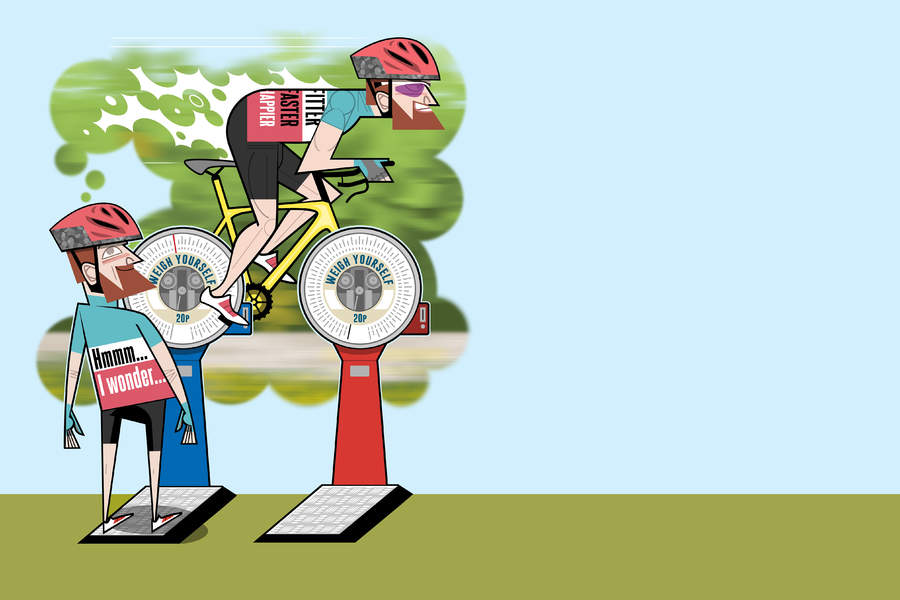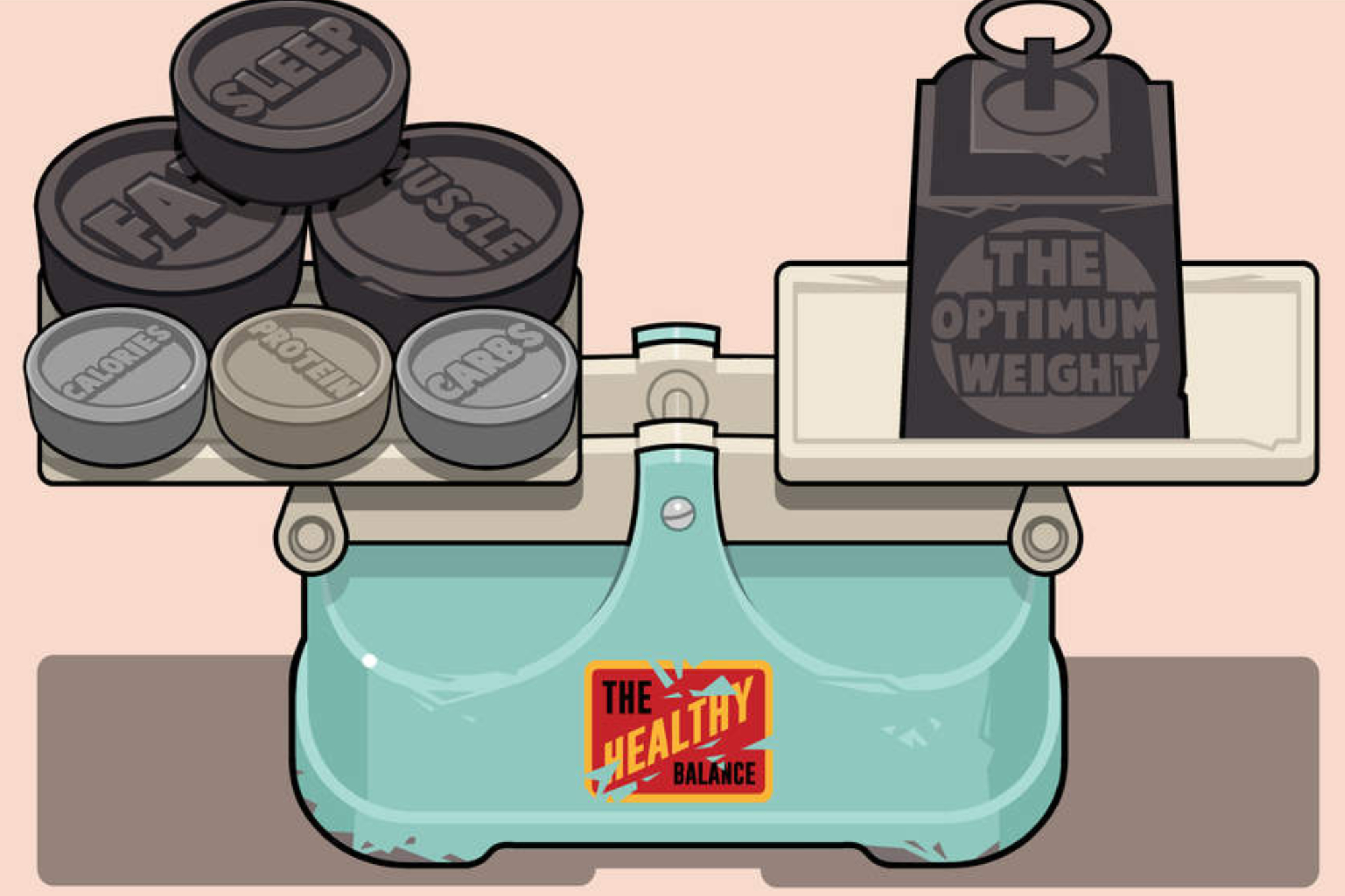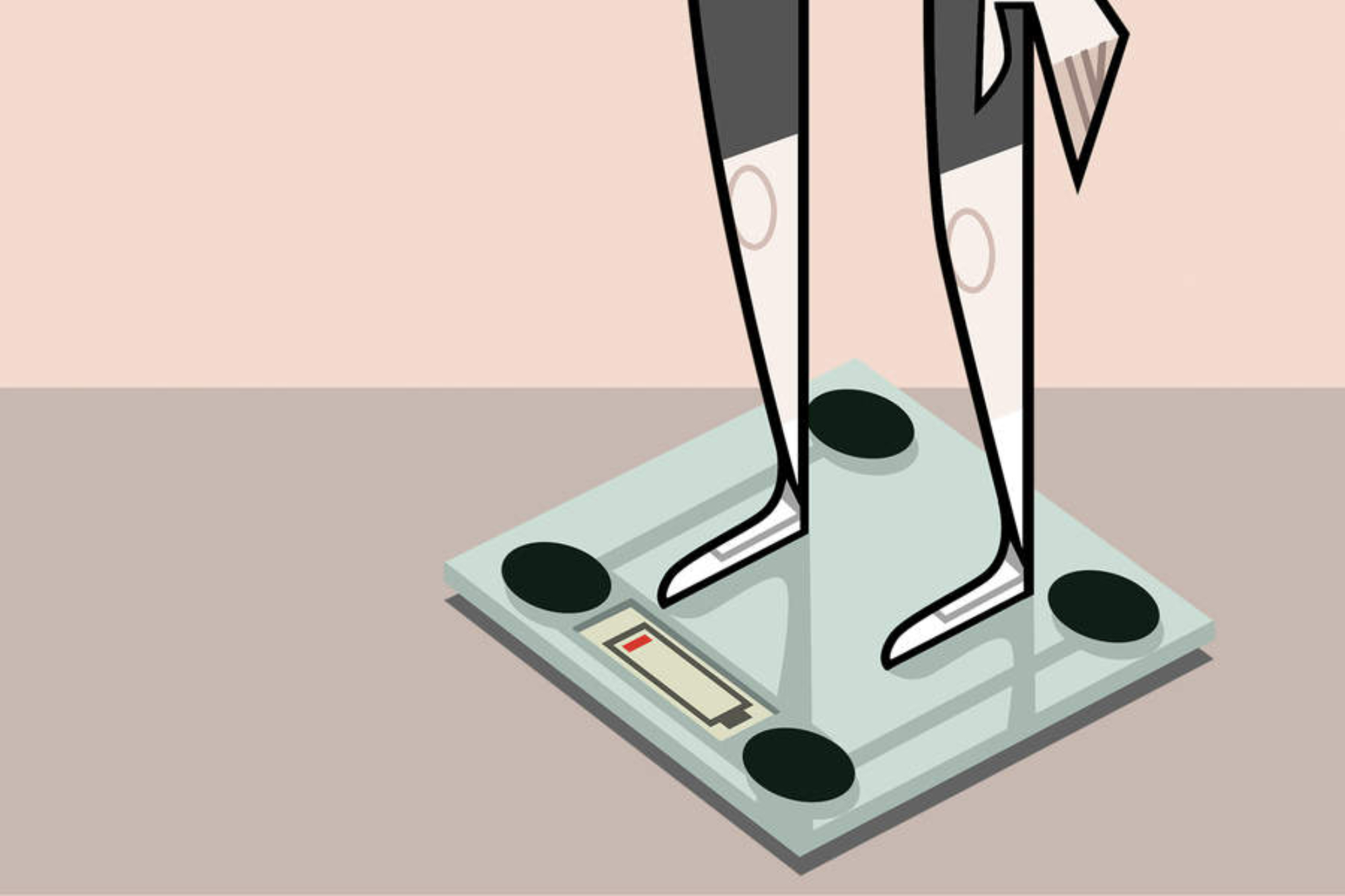How to lose weight cycling without sacrificing strength
If you're looking to lose weight cycling, here is a quick guide to reduce that number on the scales to improve your riding

This article was originally published online in October 2023. It was updated on December 12, 2024, with all information checked and confirmed to be up to date.
Body weight and composition are widely discussed, and sometimes hotly debated, topics among cyclists. That’s hardly surprising, given that your body weight – along with the cycling nutrition and training habits that got you there – has huge potential to influence your performance, for better or worse. How can an individual cyclist know what’s best for them? When does weight loss benefit performance, and when might it be detrimental? These are the questions this feature will investigate, to help you figure out whether you really need to lose weight.
When asked about how weight influences performance, cyclists generally talk about wanting to be lighter and narrower, so as to improve their power-to-weight ratio while decreasing aerodynamic drag. They are not wrong. But it’s also more complicated. Reaching optimal performance is about harmonising body weight with your training load, fuelling needs, sleep, rest and recovery. It’s about tailoring your own individual goals and strategy to find that sweet spot where you can maintain a healthy weight in a way that’s harmonious with all other aspects of your life.
In an ideal world there would be a simple formula to calculate where your own personal sweet spot lies. Sadly no such formula exists. The best we can do – here and now – is to examine how body weight influences performance and health, to define our own personal health and performance goals, then to combine this information to develop a strategy that helps you to feel strong, light and comfortable in your own skin.
How to lose weight through cycling
1. Define your goal

The glorification of weight loss is so ingrained within many cycling circles that the practical objective gets lost amid distracting rhetoric. While for some losing weight may be beneficial for health and performance, for others it would be more useful to gain weight. And of course plenty of riders are close enough to optimal weight that they shouldn’t even be worrying about it in the first place. So, if you’re thinking about losing weight, the first question to ask yourself is: why?
Generally cyclists want to lose weight for one of three reasons: for health, for performance or for aesthetics. Knowing your ‘why’ is essential, as the ‘ideal’ body weight and composition depends on your motivation – what is conducive to best performance is not necessarily optimal for long-term health. The good news for those recreational and amateur cyclists who ride primarily to stay physically and mentally healthy is that the body weight and composition ranges considered healthy are quite broad. Your overall health and performance are far more important than where you fall within that range, meaning that a large proportion of non-racing cyclists really don’t need to worry about their weight at all.
If you ride competitively, particularly if you do so on hilly terrain, you’re unlikely to be content with just staying within general ranges – you will want to optimise your weight to be as efficient as possible on the hills. This is where things start to get quite a bit trickier. When cyclists talk about losing weight for performance, what they really want is to improve their power-to-weight ratio. Historically, far too much emphasis was placed on the mass side of the equation; we are now much more aware that losing weight, beyond a certain point, can be counterproductive if it means losing strength and power.
Losing weight requires an energy deficit: fewer calories consumed than burnt. This means either eating less or training more, or both. The conundrum here is that training hard relies on effective fuelling – while cutting calories may help you shed a few kilos, it is counterproductive if it also diminishes your ability to complete and recover from hard training sessions. The holy grail is to find that elusive balance between being light but not so light that you lose power; eating enough to support optimal training but not so much to accrue and/or maintain excess weight.
The latest race content, interviews, features, reviews and expert buying guides, direct to your inbox!
2. Set the finish line

Once you’ve figured out your broader goal, you need to define how you will know when you’ve reached it. Weight loss – a number on the scales or a body-fat percentage – should never be the goal in and of itself. Instead, you should monitor your progress toward some larger objective, such as feeling healthier, more energetic, or improving performance. Imagine your new nutrition and cycling training plan led to weight loss but also left you feeling sluggish and stressed. Sure, the numbers on the scales would be favourable, but overall you would not be on track for success.
Similarly, if your goal is to improve performance, keeping a close eye on performance metrics (speed, power, etc) is essential. If you are losing weight but also slowing down, something is wrong. Perceived exertion is another metric well worth checking – how are you feeling on the rides? Strong or sapped? Are you struggling to recover after a longer ride? If so, you may need either to rethink your weight-loss cycling goal or adjust the process to get there.
3. Cost versus benefit
Time, focus, money, mental and physical energy are all valuable and finite resources. Spending them in one pursuit means they are not available for others, so you need to invest wisely. It’s easy to say, “I want to lose 3kg”, but for most people it’s much harder to actually do it.
“When it comes to performance, body weight is one of many factors to consider,” says Dr Jose Areta, exercise physiology and sports nutrition researcher at Liverpool John Moores University, and ex-national level cyclist. “Losing weight takes quite a bit of effort, and you have to consider whether that effort is really worth it, or whether it would be better spent elsewhere. Where can you get the most bang for your buck when it comes to improving performance?” The reality for many cyclists is that the biggest ‘bang for buck’ may come from other changes besides weight loss.
Before you pursue weight loss, consider whether you might first be able to improve the overall quality of your diet, the way you fuel your rides, your sleep, or your training programme. The return on investment from such improvements may be greater than that from losing a few kilos. Besides, you are likely to lose some weight ‘unintentionally’ as a byproduct of simple tweaks aimed at improving the overall quality of your diet or training.
4. Watch out for warning signs
There is a darker side to striving for leanness, and crossing that line must be avoided at all costs. Cutting calories while training hard forces your body to be extra frugal, sparing energy wherever possible, even in essential processes. The body is extremely smart and adaptable, and can cope well with short periods of energy deficit (e.g. by drawing more energy from fat reserves and ramping up energy efficiency). But there is only so much it can do to make supplies stretch.
If you are consistently consuming less energy than your body needs to run at its best, something has to give. This has been likened to a phone with low battery going into power-save mode. Just as essential phone functions may continue running while background apps are switched off, brightness reduced etc, your body is forced to prioritise by reducing the energy it spends in the background. You may not notice this as it happens, but continuing to force your body to run on “power-save” mode may have long-term consequences – not only for your training and performance, but also your health.
Unlike your phone, your body won’t send a notification to let you know that your battery is running low, but there are a number of red flags to watch out for. The simplest is a change in how you feel, on and off the bike. This warning sign from your body might be quite subtle and easily missed – unless you are watching out for it. A sense of general sluggishness, feeling more sapped than usual on the longer rides, struggling to recover, regularly coming down with coughs and colds – these may all be signs that you might be under-fuelling.
If you notice these signs, revisit your weight-loss goals and make sure your body is getting what it needs to run at its best. It takes time and patience, but getting to know your body puts you in touch with warning signs and allows you to adjust your diet healthily and sustainably.
For nutritionist and author Dr Desire Coelho, a key warning sign that her clients may be taking their weight-loss journey too far, is when they display “rigid versus flexible control” – overly fussy, pedantic dietary habits beyond what is necessary to lose weight. “Discipline and planning is a good thing,” says Coelho, “but sometimes people take it too far, and become obsessive about counting every last calorie, which can be problematic.”
Cyclists tend to be a disciplined bunch – no bad thing in itself – but there must remain room to adapt. You also need the freedom to cut loose every now and then. Importantly, you must be ready to listen to your body and to pay attention to what it is trying to tell you. Riders who exercise too rigid a control over their eating and training habits take an “all or nothing” approach and don’t like to deviate from their plans – whether or not those plans are working. Ironically, the more you strain to control everything, the more your body will fight back against you, and the harder it becomes to find a healthy balance and optimal weight.
Recommended weight and body fat percentage ranges for cyclists

'Get to the punchline,’ I hear you cry, ‘and tell us the recommended weight and body fat percentage ranges for cyclists’. Unfortunately calculating your own optimal ranges is not that simple. There are guidelines and ranges that can give you a rough idea where you fall in relation to others. For example, body mass index (BMI) is calculated by dividing your weight by your height in metres squared, with 18.5-25 described as the “healthy range”. Most Grand Tour cyclists have a BMI of 20-22, but there are plenty of outliers, some lighter, some heavier, revealing no clear relationship between BMI and cycling success.
It’s similar in the case of body fat percentage, a useful metric for indicating the overall proportion of fat to muscle in your body. Recommendations range from approximately six to 22% for men, and about 16-32% for women. As with BMI, well-trained cyclists tend to fall within the middle to lower end of this range, but again, this varies widely from cyclist to cyclist.
The reality is that broad-brush guidelines are only really useful in characterising groups; they tell us little about any particular individual. Your genetics, biology and training; health, performance and life goals; work and family responsibilities, social life and interests outside cycling all combine to determine what is optimal for you – or where your own sweet spot lies.
No simple formula can account for all of this, and the only relevant comparison that you can ever make is with yourself. How are you progressing over time? Do you feel like you are getting stronger? If you believe that losing some weight might help you meet your health and performance goals, go for it – tailor your nutrition plan to cut surplus calories, and consider if there is room for improvement within your training programme. Seek support from a professional if possible. Whether to monitor weight and/or body fat percentage comes down to personal choice. Whatever you decide, keep in mind that weight is just one factor in determining your overall health and performance. Keep the bigger picture in mind and don’t obsess – instead, keep your eye on the main prize, whatever that is for you.
Top tips from a cycling nutritionist
Dr Desire Coelho, a nutritionist, author and keen amateur cyclist, urges all cyclists to stick to these golden rules:
Sleep well: “Adequate sleep is key to both health and performance, and can even influence your appetite, with lack of sleep increasing ‘hedonistic hunger’, i.e., hunger that has nothing to do with what your body needs and everything to do with how tasty you find certain foods.”
Eat plenty of protein: “Cyclists are generally very focused on carbohydrate intake, and rightly so, as it’s key for cycling. But making sure that you eat plenty of high-quality, lean protein – 1.5-2g per kilo of body weight per day – can help you build and maintain muscle mass, even while losing weight, and can keep you feel fuller for longer.”
Plan ahead: “Failing to plan really is planning to fail, so don’t rely on motivation and good-will to keep you on track. Figure out a strategy that will help you to stick to your plan even when life is hectic.”
Tracking nutrition

Many cyclists use tracking apps and wearable devices such as the best smartwatches to monitor their energy intake and expenditure. Tracking can be useful to monitor progress and to identify potential areas for improvement. But the actual numbers need to be taken with a very large pinch of salt.
Energy expenditure in particular is notoriously difficult to measure, and most apps and fitness devices provide only a rough estimate at best. So go ahead and track if you find it useful, but don’t obsess over these numbers. Instead, focus on your performance stats, and listen to what your body is telling you – not your watch.
Glossary
Body weight: The combined total of your muscle, fat, bones, body organs and fluids. Body weight can fluctuate by as much as 1-2kg a day, mainly due to alterations in fluids and food.
Body composition: Body weight broken down into its component parts, generally reported as the proportion of fat to muscle (e.g. body fat percentage). This can be measured by DXA scan, skinfold assessments or bioelectrical impedance. Each of these provides imperfect estimates, and are best used to track your own progress, rather than to compare with others or to compare to reference ranges.
Power-to-weight ratio: Your maximum power (Watts) divided by your body mass (kg). The higher your power-mass ratio, the stronger you will feel on your bike, particularly when climbing.
Energy balance: The balance between calories consumed and calories burnt. Every cell, organ and tissue in your body requires calories to function, and the more you train, the more energy you will burn. You must eat sufficient food to cover all your daily calorie costs (energy balance). If you habitually consume more than you burn, you will gain weight, whereas losing weight requires a calorie deficit. Weight gain or loss due to energy imbalance will primarily come from fat or muscle, with your training habits determining proportional changes.
Periodization: Training periodization refers to adapting the volume, intensity and type of training undertaken throughout the season, the ultimate goal being to reach peak performance at competition time. Nutritional strategies should be tailored to the training phase, e.g. you may need to eat more during particularly arduous training phases.
The first version of this article was published in the print edition of Cycling Weekly. Subscribe online and get the magazine delivered direct to your door every week.
Dr Eimear Dolan is a researcher in applied physiology and nutrition at the University of Sao Paulo, Brazil. Her main research interests include energy availability, body weight management, bone health and female athlete physiology.
You must confirm your public display name before commenting
Please logout and then login again, you will then be prompted to enter your display name.